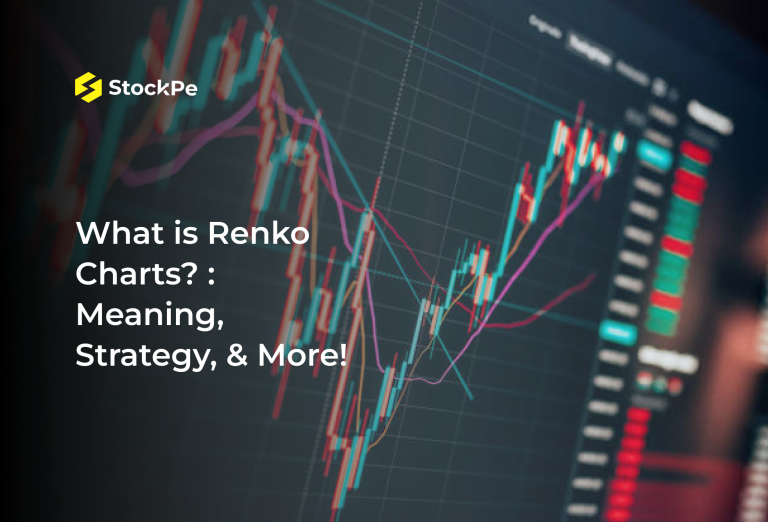Trend following is considered a highly efficient trading strategy because it does not require much time, the rules are quite simple, and it yields good results. This makes it possible for traders to keep their day jobs or have other interests while producing consistent earnings. But what makes the process of trend following effective and why it has not been completely utilized in the market yet?
This article discusses why trend following works, the stress it entails, and the strategy it involves.
Why Does Trend Following in Stocks Work?
In its essence, trend following is as simple as it sounds. It doesn’t require sophisticated procedures or complicated machinery. A good trend-following system follows some basic guidelines that can be easily understood with little trading experience.
Yet despite its simplicity, it is not without challenge and effort on one’s part. The utilization process of the strategy involves emotional discipline which is an area of a major concern for most of the traders.
For instance, in the following trend, approximately 70% of trade might be in the negative region. However, 30% of the trades are winners ,which means that you can make substantial profits. This counterintuitive approach to trading demands that traders look for long-term profit rather than short-term correctness.
Emotional Discipline: The Core Challenge
Trend following requires one to leave out emotion when making any decisions or when predicting trends. Some investors lose simply because they do not want to wait or are forced to make decisions before they are ready. Seeing a trend start to form over time or experiencing a series of small losses can really wear one down.
Besides, due to social conditioning, people have problems with accepting losses. Many individuals associate losses with failure; however, profitable trend followers do not base their experience on win ratios.
Not getting emotionally involved in the game is the major side that makes the difference between those who can succeed with the given strategy, and those who fail or quit.
Advantages of Trend Following Over Other Strategies
Trend following is an effective strategy and is better than others in the following factors:
1. Freedom from Constraints
Trend-following strategies are not restricted from a sector perspective or pegged to a market index like mutual funds. Mutual funds are fully invested, including in declining markets. On the other hand, trend followers can get out of those shares and sit on their cash until they see the next great opportunity. This ability allows those who track trends to preserve their money during periods of downturns in the market while mutual funds still lose money.
2. Broad Market Coverage
The concept of trend following enables the trader to look for and participate in opportunities in various markets. For example, a trader could monitor thousands of stocks from different areas like Australia, Hong Kong, and the United States to search for patterns. While ETFs are flexible and may track the performance of a single asset or index, mutual funds can only invest in a particular sector or region, unable to seize global opportunities.
3. Taking Advantage of Market Anomalies
Market participants require time to act on new information, thus allowing trends to slowly form over time. These steady trends could be driven either by changes in fundamentals or in investors’ tastes, and present traders with opportunities to trade on progressive price changes.
For instance, a firm releasing information about a new product that is revolutionary could observe a rise in its share value since more people are beginning to see the possibility. Trend followers may wait for these waves of optimism and get out right on top ready to make their gains without having to sit through a long period of loss.
Key Drivers of Stock Trends
Stock trends are driven by various factors, such as:
1. Shifting Fundamentals
Fundamentals like interest rates, earnings growth, or corporate plans display certain trends most of the time. When companies enhance operational performance through innovation or cost-cutting measures, the performance of their shares in the market also escalates the same way. Following the trend does not require any analysis of the chart; the trader only looks at the upward movement and takes a position.
2. Investor Sentiment
Market behavior is highly affected by people’s feelings like fear and greed. It is well understood that the strength of an investor’s beliefs rises and falls in cycles, and this affects stock prices. During the optimism, P/E ratios go high since investors are willing to pay for the stock based on the earnings. Trend followers target such changes to arrest the flow of stocks as sentiment begins to gain momentum.
3. Corporate Excellence
Through better management, it is possible to guarantee long-term trends and changes in the stock without explicit dependence on other market shifts. When a firm develops and launches better products or improves on the process of production, it experiences gradual increases in profitability and the resultant upward price trends.
Conclusion
Trend following trading system is one of the best in the trading world, although it may not suit everyone. It may seem simple on the outside but it needs a lot of emotional strength to implement it every day. If patience and proper trading methodology are applied, there are opportunities to make big money on market imperfections, changing fundamentals, and changing sentiment.
Frequently Asked Questions
1. What is the trend following in trading?
This is a strategy that focuses on trading in the direction of the current trends be it up or down and exiting the trade and getting out of the market once the trend changes.
2. To what extent is the trend following emotionally demanding?
Trend following demands from traders to endure many little losses and rely on the system, which is challenging since human beings get impatient, and in society, winning is valued.
3. Will trend following be effective in any market environment?
This strategy is good and very lucrative especially when the trending direction is highly defined, but it is not excellent in sideways or even choppy markets.





